Matador Network's Blog, page 916
February 24, 2020
Reddit map of New York City

New York City is in a constant state of flux. There are few better examples of this than the ever-shifting (and ever-argued-about) neighborhood boundaries, which have a different name or border depending on which resident you ask and which real estate developer is trying to sell you on a property. To try and settle the debate once and for all, a Redditor created an official NYC Neighborhoods Map.
The map designates 288 neighborhoods in the five boroughs. It covers the obvious and largely uncontested neighborhoods (Hell’s Kitchen, Alphabet City, Park Slope) and leaves out some disputed ones (Hudson Yards and Yorkville are both left off). The map notably features 43 more neighborhoods than the “official” neighborhood map made in November 2019 by the government-sponsored NYC Census 2020.
There’s a long history of New Yorkers arguing about which part of the city belongs to which neighborhood. The city and state governments stay out of the conversation altogether, meaning the census group’s map is the closest thing to a government recognized boundary system. Most of the public comments about that map, however, were saying how wrong it was. Clearly, when it comes to New York, there is always space for another map.
Aside from being a way to settle arguments, the Reddit map makes it easy to fall into rabbit holes of New York City geography and history. Take, for example, The Hole, which comes with the note, “While some may not consider this an independent neighborhood, we have paid it homage because we find it a fascinating area.” The Hole is a tiny neighborhood that’s split by the Brooklyn-Queens border. Its name is meant to be taken literally: The neighborhood is 30 feet below the city’s grade and is just above the water table, according to Curbed, and it’s not a part of the municipal sewer system, so pools of water dot the streets (there are few sidewalks). It’s most famous for being a mob dumping ground for dead bodies and the historic home of the Federation of Black Cowboys.
Regardless of the entertainment factor, this New York City neighborhood map is also disputed. Some commenters argued about huge designations (“This whole ‘Midtown’ is too overreaching — there’s Turtle Bay, Midtown East, etc.”) while others took issue with neighborhoods being split too granularly (“Since when was Astoria broken up into two neighborhoods?”). But local disagreement is simply another thing that makes this a true New York City neighborhood map. 

More like this: The ultimate LGBTQ guide to New York City
The post There are actually 288 New York City neighborhoods, according to new map appeared first on Matador Network.

African American heritage sites 2020

2020 is the 155th anniversary of the abolition of slavery in the United States. Here’s the list of museums, memorials, and historic sites you’ve got to see this year.
We pored over the websites of all the best-known African American cultural and heritage institutions to find those that are running fantastic exhibits, like the Negro Motorists Green Book at the National Civil Rights Museum in Memphis, Tennessee. We also considered the legacies of luminaries and the experiences of everyday people. For example, one site is celebrating W.E.B. Du Bois’ environmental activism, and another is marking the 95th anniversary of the Brotherhood of Sleeping Car Porters.
From DC to California, this list covers all cardinal points on the compass, and the events and learning opportunities are a mix of serious and celebratory. Wherever you are in the country, we hope at least one of these places is within reach, but they are all worth a road trip. Here are the must-see African American heritage sites in the US this year.
1. The Legacy Museum and Legacy Pavilion — Montgomery, Alabama

Photo: Equal Justice Initiative/Facebook
In the new Michael B. Jordan movie Just Mercy, Jordan plays Bryan Stevenson, a real-life lawyer who has dedicated his career to serving people illegally convicted, unfairly sentenced, or abused in prison. His pursuit of justice and mercy for the marginalized led to him found the Equal Justice Initiative (EJI), which continues his work on a wider scale. It is this organization that developed the Legacy Museum in Alabama. The museum exists to acknowledge the legacy of slavery, segregation, and lynching in modern-day American society.
The Legacy Museum opened in April 2018 in a building mere feet away from what was once an active slave auction site. It explores the way slavery led to lynchings and other racially based violence, and how these led to the issue of mass incarceration today. In addition to traditional exhibits, the museum employs videography, animated content, and fine art to connect with audiences and share information. Thanks to the tireless efforts of the EJI team, which spent over a decade on research, the museum has the most comprehensive documentation on lynchings in the United States.
This January the EJI unveiled the Legacy Pavilion, which serves as a welcome center for the museum and nearby memorial. The pavilion extends the museum experience with its own exhibits and highlights the role that Montgomery played in the Civil Rights Movement.
Where: 400 North Court Street, Montgomery, AL 36104
2. National Memorial for Peace and Justice — Montgomery, Alabama
The National Memorial for Peace and Justice is the first of its kind in the United States, dedicated to enslaved Africans, lynched African Americans, and African Americans living under the oppressive segregation laws. It was created by the Equal Justice Initiative and is a sister site to the Legacy Museum.
The memorial begins with a commissioned sculpture on slavery and, as with the museum, moves chronologically to the present day, addressing police violence and the criminal justice system. The memorial skillfully weaves art, space, and design to walk visitors on a path that in some ways has them physically confront the impact of history. The six-acre site includes 800 six-foot monuments, row upon row of metal columns suspended from a ceiling, etched with the names of those victims to lynching.
After visiting the Legacy Pavilion and the Legacy Museum, the National Memorial for Peace and Justice is a good place to both continue learning about the legacy of racial terror and reflect on the sobering information.
Where: 417 Caroline Street, Montgomery, AL 36104
3. California African American Museum — Los Angeles, California

Photo: California African American Museum/Facebook
This year, the California African American Museum is unveiling new additions to its permanent collection. The “Sanctuary” exhibit will be on view from March to September 2020 and features photographs, sculptures, and mixed-media work. The pieces all explore the idea of safety and refuge as it relates to the African American experience, hence the name.
The California African American Museum opened in 1981. While it collects artifacts from across the country, its focus is on the African American experience in California and the western United States. Particularly strong in the arts, the museum also has a series of fashion-related programming this year: two workshops, one on men in fashion and the other on fashion and social change, and a men’s apparel exhibit. On view until August 2020, “Cross Colors: Black Fashion in the 20th Century” examines the Cross Colors clothing brand, which became popular after dressing Will Smith for the first season of the Fresh Prince of Bel Air.
The Smithsonian’s “Men of Change: Power. Triumph. Truth” exhibit, developed for its Traveling Exhibition Service, will be on view at the museum April-August 2020. It will feature revolutionary African American men whose work has altered the course of American history. Bringing together the work of 25 artists, the exhibit includes photographs, quotes, and works of art depicting men like W.E.B. Du Bois, Alvin Ailey, and LeBron James.
Where: 600 State Dr, Los Angeles, CA 90037
4. A. Philip Randolph Pullman Porter Museum — Chicago, Illinois
Pullman porters were the black American men that worked on sleeping cars during the height of the railroad industry. If their name sounds familiar, it’s probably because they became famous for their impeccable service and hospitality. Initially, they labored under exploitative conditions, but after years of threats against organizing, they formed the Brotherhood of Sleeping Car Porters. Led by magazine publisher Asa Philip Randolph, who wrote about the porters’ horrible conditions, the Brotherhood was the first African American union in the United States to win a collective bargaining agreement.
The A. Philip Randolph Pullman Porter Museum is dedicated to telling the stories of these porters and other laborers on the railroad. This February, to celebrate its 25th anniversary, the museum is hosting a gala event and introducing the A. Philip Randolph Gentle Warrior Awards. August 2020 marks 95 years since the Brotherhood was founded and brings to a close the museum’s three-year campaign to register descendants. If you are a descendant of a porter, maid, dining car waiter, or other railway worker, the museum would like to record your family’s story.
Whether or not you have this close connection, 2020 is the perfect time to visit the museum and learn about these men that transformed their difficult jobs into badges of self-respect and national admiration.
Where: 10406 South Maryland Ave, Chicago, IL 60628
5. National Museum of African American History and Culture — Washington, DC

Photo: bakdc/Shutterstock
You probably remember the jubilant opening of the National Museum of African American History and Culture. In those early days in 2016, people stood in lines that wrapped around the block just to get inside. No wonder given that the idea for the museum was first put forth in 1915. It took over a century, and 13 bills in Congress, to become a reality. The museum is dedicated to documenting African American history, life, and culture, and today has an incredible number of artifacts, currently numbered at over 36,000.
Until June 2020 you can visit “We Return Fighting: The African American Experience in WWI.” This comprehensive exhibit covers the periods before, during, and after the First World War, with never before seen artifacts including uniforms, oil paintings, weapons, and film footage.
If art and pop culture are more your thing, you’ll want to head over to “Now Showing: Posters from African American Movies.” This exhibit, open until November 2020, is the first to feature augmented reality, which means you can interact with posters using your smartphone. More than just a gallery, the exhibit explores the ways the posters teach us about perceptions of African American life and culture through the years.
Where: 1400 Constitution Ave NW, Washington, DC 20560
6. W.E.B. Du Bois National Historic Site — Great Barrington, Massachusetts
W.E.B. Du Bois is renowned as a public intellectual. He spent his life fighting for racial equality, civil rights, and world peace. His writings articulated what many African Americans felt about their lives in the US. Best known for his book The Souls of Black Folk, he also wrote The Suppression of the African Slave Trade and The Philadelphia Negro, all by the time he was 35. Du Bois was born in Great Barrington, Massachusetts, and it is here that you will find the W.E.B. Du Bois National Historic Site.
Du Bois was also an environmental activist, known especially for his love of rivers. On August 29, 2020, the 57th anniversary of his burial ceremony in Ghana, this devotion will be celebrated at the “I’ve Known Rivers” event. The riverside celebration will include musical tributes, poetry, readings, and a tour, and will culminate at the Clinton A.M.E. Zion church. If you’re unable to make “I’ve Known Rivers,” you can still take guided or self-guided tours of Du Bois’ five-acre homesite and downtown Great Barrington.
Where: 612 South Egremont Road, Great Barrington, MA 01230
7. National Civil Rights Museum — Memphis, Tennessee

Photo: Gino Santa Maria/Shutterstock
The film Green Book, starring Viggo Mortenson and Mahershala Ali, won Oscars for Best Picture (albeit a controversial decision), Best Original Screenplay, and Best Supporting Actor for Ali last year. The film is named after an actual publication, The Negro Motorist Green Book, used by African Americans on road trips in the Jim Crow era. It was a vital handbook, published between 1936 and 1966, listing the hotels, gas stations, restaurants, and other businesses safe for African Americans to visit on their travels. Without it, black men and women would have literally been risking their lives whenever they attempted to find comfort and safety on the road; with it, they were able to visit friends, family, and generally have more control over their movements, free from otherwise crippling anxiety.
This year, the National Civil Rights Museum is focusing on the impact of the Green Book. On February 27, it will host author Candacy Taylor for a talk about her book Overgrown Railroad: The Green Book and the Roots of Black Travel in America. Then in June 2020, the museum will open “The Negro Motorists’ Green Book and American Story” to the public. The exhibit closes in September 2020.
The National Civil Rights Museum was established in 1991. Housed in the Lorraine Motel, where Dr. Martin Luther King Jr. was assassinated, it is dedicated to examining the history of the Civil Rights Movement and how it continues to shape global society.
Where: 450 Mulberry Street, Memphis TN 38103
8. Malcolm X Memorial Foundation — Omaha, Nebraska
May 2020 is another major anniversary, marking 95 years since Malcolm X’s birth. What better way to honor this hero of the Civil Rights Movement than to visit his hometown in Omaha? The Malcolm X Memorial Foundation, established in 1971, is housed on the site where Malcolm X was born. The foundation is currently being led by a group of vibrant young African Americans, who oversee a radio show, community garden, and children’s advocacy organization, among other projects.
Although the house has been torn down, a plaque giving an overview of Malcolm X’s life was erected on the site. Volunteers lead tours of the property, and though walk-ups are welcome, we recommend calling in advance. The foundation schedules lots of interesting programs throughout the year, so take a look at its website to see if you can time your visit to see a public lecture or music event.
Where: 3448 Evans St, Omaha, NE 68111
9. Charles H. Wright Museum of African American History — Detroit, Michigan

Photo: Charles H. Wright Museum of African American History/Facebook
The International Afro-American Museum, founded by Dr. Charles H. Wright, opened in 1965. Dr. Wright was inspired to create the museum after encountering a WWII memorial on a visit to Denmark. Renamed after its founder in 1998, the Charles H. Wright Museum of African American History celebrates African American culture and history. With over 35,000 artifacts, it is one of the largest repositories of the African American experience in the world.
On April 30, 202, the museum will unveil an exhibit dedicated to 44th US President Barack Obama. The exhibit consists of 44 life-size busts of the president sculpted by 44 different artists. Also, this year, visit the museum to see paintings from actress CCH Pounder’s personal collection. The “Queen” exhibit, on view until April 2020, features works by renowned black American women artists.
If festivals are more your thing, 2020 is the 55th anniversary of the museum. As part of its celebrations, the 38th Annual African World Festival kicks off at the museum grounds on August 14, 2020. This three-day festival attracts more than 100,000 visitors and includes food, music, poetry, and dance.
Where: 315 East Warren St, Detroit MI 48201
10. Harriet Tubman Museum — Cape May, New Jersey
Born into slavery in 1822, Harriet Tubman not only escaped but returned to rescue approximately 70 other enslaved people. She is best known for her efforts on the Underground Railroad but was also a spy for the Union during the Civil War and an advocate for women’s suffrage. This Juneteenth, the Harriet Tubman Museum will open in Cape May, New Jersey, to teach visitors about Tubman’s work and the significant role of Cape May on the Underground Railroad. Juneteenth, or June 19th, is the day that Texas abolished slavery, finally making it illegal throughout the entire United States.
In the early 1850s, Tubman spent summers in Cape May working as a cook for hotels and families. She used her earnings not just to support herself but also to finance her rescue missions. Escaped fugitives to Cape May were assisted by churches, abolitionists, and Quakers, and the museum highlights their contributions as well. Among its collections is a signed copy of an early edition of The Underground Railroad by abolitionist William Still. The book, first published in 1872, tells the story of Cape May’s involvement in helping enslaved people move further north.
The museum, which has been under construction for about a year, is housed in the historic Howell House. The onetime parsonage for the still-active Macedonia Baptist Church is being restored to its pre-1800 origins and expanded with an addition. The building now incorporates planks of wood from a demolished Cape May home that was a safe house on the Underground Railroad.
Smithsonian Magazine named the Harriet Tubman Museum one of the most anticipated museums to open in the world this year. The staff is already fielding inquiries from schools and organizations, including a cycling group that wants to organize a 200-mile bike ride to the museum on opening weekend.
Where: 632 Lafayette Street, Cape May, NJ 08204
11. National Museum of African American Music — Nashville, Tennessee

Photo: National Museum of African American Music/Facebook
This summer, the National Museum of African American Music will have its grand opening in Nashville, Tennessee. The museum takes an in-depth look at the more than 50 genres and subgenres of music created, influenced, or inspired by African Americans. It is the first and only museum to focus on preserving and celebrating African American music traditions and their impact on American culture. The museum integrates history with interactive technology to bridge the gap between music from as far back as the 1600s to the present day.
Smithsonian Magazine named the National Museum of African American Music one of the top 10 museums worldwide opening in 2020, and you can take a virtual tour through the 56,000-square-foot facility. Already known as the Music City, Nashville was an obvious choice for the museum founders. In the city where great African American musicians and music events thrived, the Fisk Jubilee Singers launched the first world tour by a musical act from their base at Nashville’s Fisk University.
With five major galleries, a 200-seat Roots Theatre, Rivers of Rhythm interactive corridor, and a research library, the National Museum of African American Music is poised to be an incredible resource for music lovers of all kinds.
Where: 211 7th Avenue North, Suite 420, Nashville, TN 37219 

More like this: 7 perfect cities for black travelers in 2020
The post 11 must-see African American heritage sites in the US this year appeared first on Matador Network.

Kyoto's 'empty tourism' campaign

Travel to Japan has skyrocketed over the past several years, with more than 30 million visitors flocking to cities like Toyko and Kyoto in 2018 alone. Tourism has taken a major hit since the coronavirus outbreak, however, prompting enterprising shop owners in Kyoto to spin the situation in an attempt to reignite international interest in the city.
Creating a marketing campaign called suitemasu Arashiyama, or “empty Arashiyama,” vendors in Kyoto’s Arashiyama neighborhood have begun advertising the city’s emptiness as an opportunity for travelers to fulfill the universal dream of visiting a destination as popular as Japan without running into hordes of other tourists.
嵐山おもてなしキャンペーン
~スイてます嵐山・今こそ!おこしやす~
嵐山の5つの商店街が合同でキャンペーン。
比較的閑散期でもあり、またコロナウィルスの影響で通常より来訪者が少ない今!
ゆったりと嵐山を訪問してもらい、各お店もいつも以上のおもてなしの心でお迎えするキャンペーン pic.twitter.com/ZoQtE8PR0M
— 嵯峨嵐山おもてなしビジョン推進協議会 (@sagaarashiyamao) February 14, 2020
Though Kyoto residents have grown accustomed to the city’s 17 UNESCO World Heritage sites being perpetually crowded, posters created for the campaign depict landmarks like Togetsukyo Bridge and Kyoto’s bamboo forests completely devoid of visitors. “It’s been a while since there were more monkeys than people,” a poster of a monkey is captioned.
Though overtourism in Japan was, until recently, a concern, this sudden, striking dip in tourism is also impacting the country and its citizens. It remains to be seen what lasting consequences the coronavirus outbreak will have on tourism in Japan or elsewhere, but it’s clear that business owners in Kyoto are already concerned. 

More like this: Everything you need to know about Japan’s 2020 cherry blossom season
The post As coronavirus spreads, Kyoto launches campaign to bring back tourists appeared first on Matador Network.

Free public transit in Luxembourg

In a major win for both the environment and commuters in the tiny European nation of Luxembourg, the government is making all public transport free within the country. Luxembourg is the first country in the world to do so at the federal level, with ticket fares being kicked to the curb as of March 1, 2020.
Luxembourg’s public transport system is all-encompassing within the 1,000-square-mile country, and the push is an effort to get commuters out of private vehicles and onto buses, trams, and trains in order to clear up room on the country’s crowded streets and highways.
One might wonder how a country with just 680,000 residents and only one medium-sized metropolitan area could be so congested. At nearly $9,000 per square meter, property in Luxembourg City is far from affordable for the average European family. As a result, many who work in the capital city commute from neighboring Germany, France, and Belgium, creating a backlogged road system in and out of the capital on weekdays.
While free public transport ends at the border, commuters from neighboring countries will enjoy reduced fares.
Luxembourg’s public transit system costs over $500 million per year to run and generates just $42 million in ticket sales. The government’s step to cover the cost of ticket sales is made possible by the country’s booming economy. “The country at this very moment is in really good shape,” said Dany Frank, with Luxembourg’s Ministry of Mobility and Public Works, to CNN. “We, the government, want the people to benefit from the good economy.” 

More like this: Actionable ways you can reduce your ski trip’s carbon footprint
The post Luxembourg makes all public transit free as of March 1 appeared first on Matador Network.

Coronavirus outbreak in Italy effect

Italy has confirmed more than 200 cases of the novel coronavirus, making it the most-affected country in Europe and sparking travel advisories as far away as Ireland.
Authorities in northern Italy, where the majority of the cases have been confirmed, are on a hunt to find the original source and to contain the outbreak from spreading further across the country. CNN reported five deaths from the coronavirus in Italy, where the majority of cases are in the northern region of Lombardy.
The city of Venice is taking precautions against the virus and has canceled its annual Carnival celebrations ahead of schedule. The event, which draws hundreds of thousands of attendees, was scheduled to go through Tuesday but was shut down over the weekend. The fashion hub of Milan, the capital of Lombardy, was also impacted, closing the popular Milan Fashion Week to the public and forcing big-name brands including Giorgio Armani to debut new designs without the public as witnesses. According to a Bloomberg report, live streams have stepped in for public-facing events in some cases. Italy’s top soccer league, Serie A, has also canceled matches in much of northern Italy.
Beyond major festivals and sporting events, many public buildings have been closed and public transportation slowed to a halt in the region, under orders from Health Minister Roberto Speranza.
At least one train passing from Italy into neighboring Austria has been stopped at the border after two passengers reported symptoms. The train continued on when the travelers tested negative. One bus traveling from Italy to France was stopped in Lyons on Monday over suspicions that one passenger was suffering from the virus. The traveler was transported to a hospital. 

More like this: Everything travelers need to know about the coronavirus outbreak
The post Coronavirus cases escalate in Italy, ending the Venice Carnival early appeared first on Matador Network.

South Korea sees rise in coronavirus

South Korea is now the second most-affected country in the coronavirus outbreak after China. As of Sunday, February 23, the World Health Organization reported 602 confirmed cases and five deaths linked to the virus.
The sharp increase in cases has led the South Korean president to raise the infectious disease alert to its highest level. The maximum threat alert gives the government the power to quarantine cities and ban the movement of people both into and within the country.
On Saturday, the US Department of State issued a level-two travel warning for South Korea: “Exercise Increased Caution due to an outbreak of COVID-19.” Hong Kong has asked its residents to avoid all non-essential travel to South Korea, Reuters reports.
The outbreak in South Korea is linked to a gathering of members of the Shincheonji Church of Jesus in the town of Daegu. According to the New York Times, “More than half of all the patients in the country are either members of Shincheonji or their relatives and other contacts.” Most of the cases in South Korea are located in the town of Daegu.
The South Korean government is keeping daycares closed for the moment, and schools will remain shut until March 9, 2020. Church-goers have been asked to stay home and large outdoor gatherings have been banned. 

More like this: Everything travelers need to know about the coronavirus outbreak
The post South Korea at highest alert level due to sharp rise in coronavirus cases appeared first on Matador Network.

February 21, 2020
The origins and history of Nando’s

Ask any Brit what their favorite takeaway spot is and they’re sure to mention Nando’s. Ask them about the origins of Nando’s menu, and they’ll probably say Portugal. It’s a reasonable answer. Its logo is the Rooster of Barcelos, a famous Portuguese symbol. The food is seasoned with Portuguese spices and Portuguese bread rolls are among the restaurant’s many sides. However, to label Nando’s a product of Portugal isn’t strictly true. Nando’s was in fact born in Johannesburg, South Africa, making this beloved fast-casual spot a mashup between Portuguese and African cuisines. Here’s everything you need to know about the origins of Nando’s, and its effort to celebrate and support South Africa.
The complex origins of Afro-Portuguese cuisine
Portuguese cuisine has long been a vital part of Africa’s diverse culinary landscape. In the 15th century Portuguese explorers began their expedition around Africa in search of gold and black pepper. In the early 1500s, Portugal colonized Guinea-Bissau in West Africa and Angola and Mozambique in the south. Tragically Portugese colonial rule resulted in the brutal enslavement of many people native to these countries. While slavery was officially abolished in Africa in 1869, Portuguese colonial rule would continue until 1975.
After Angola and Mozambique gained independence, many Afro-Portuguese people once living in these countries immigrated to Brazil or Portugal but a significant number of refugees also made their way to South Africa. Today, South Africa is home to the largest African Portuguese population in the world. As their community grew, Afro-Portuguese restaurants began to pop up in these areas serving dishes that were popular in their home countries such as prego (steak rolls), espetada (kebab) and, of course, peri-peri chicken.
Peri-peri chicken in particular has sparked much debate over its origins. Some say that the Portugese brought the African bird’s-eye chilli, or peri-peri pepper, to Mozambique from Brazil. Others say it actually first discovered in Zambia and Zimbabwe and brought back to Portugal. While we may never know the exact origin of this spicy capsicum, we do know that it flourishes in a Mozambican climate and is an integral part of African cooking.
The rise of peri-peri chicken
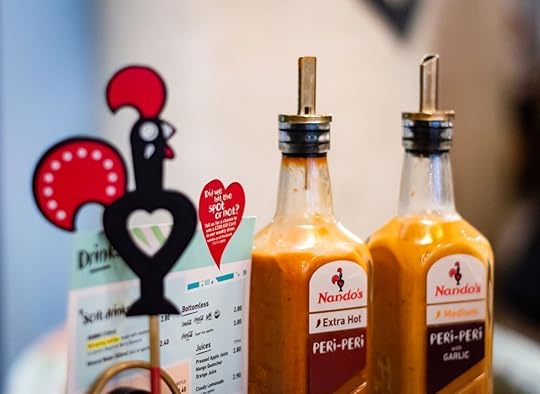
Photo: Min Jing/Shutterstock
Peri-peri chicken does not only predate Nando’s, it is the reason that Nando’s exists. It is a dish that is neither intrinsically Portuguese nor African yet its significance in both cultures is undeniable. The story of peri-peri chicken’s global takeover begins with two friends looking for a bite to eat.
Back in 1987, two pals visited Chickenland, a so-called “dodgy” takeaway spot in the Johannesburg suburb of Rosettenville. At that time, South Africa was deeply segregated and it was not common for non-Portuguese people to visit this neighborhood. Mozambique-born Fernando Duarte (who is white) introduced his friend, Robert Brozin, a Jewish South African man, to the delights of Portuguese cuisine and Brozin soon fell in love.
Brozin became obsessed with the combination of chicken marinated in peri-peri sauce at Chickenland and knew that the world had to taste this glorious dish. Eventually, Brozin and Duarte bought the little restaurant and renamed it Nando’s, after Fernando’s first-born son. In 1993 the Nando’s chain expanded to the UK and as of 2017, there are over 1,000 Nando’s locations in 35 countries. Nando’s became a celebration of both the Afro-Portuguese community and of South Africa as a whole.
In Portugal, piri-piri chicken (as it is spelled there) is a popular dish, but far less chili is used to season it, making it a much milder version than you’ll find in South Africa. To make Nando’s signature peri-peri sauce, the spicy pepper is infused with salt, garlic, lemon, onion, oil, and vinegar. The chicken is then marinated in the sauce for 24 hours, flame-grilled, and served at your desired spice level.
Another beloved spicy dish in the southern region of Africa is peri-peri chicken livers, usually served with bread to soak up all those glorious peri-peri juices, as well as garlic soaked Mozambican peri-peri prawns.
Nando’s loves South Africa
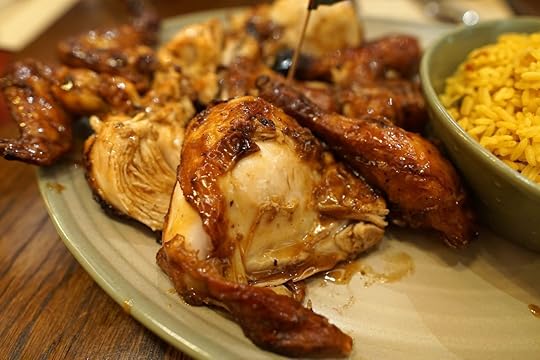
Photo: Ho Su A Bi/Shutterstock
There were, of course, a few challenges for Nando’s before it became the globally recognizable brand it is today. At the time of the restaurant’s inception, South Africa was in political turmoil under the apartheid regime. The founders had little money and no restaurant experience, all they knew was that they loved peri-peri chicken. Thus began the start of Nando’s trademark advertising, which was and continues to be rather controversial.
The aim of Nando’s advertising strategy was not only to highlight its product but to challenge perceptions of South Africa and to speak to current events in a humorous, tongue-in-cheek fashion. It worked. Nando’s advertising has been both criticized and praised for being fearless in tackling taboo subjects around race, religion, politics, and sex. Many of its advertisements have been banned, including one tackling xenophobia, another featuring a puppet modeled after the African National Congress Youth League then-president Julius Malema, and one mocking Robert Mugabe and other well-known dictators.
Nando’s consistently addresses pertinent social issues in South Africa. According to Doug Place, chief marketing officer for Nando’s South Africa, the company is so involved in the country’s politics because no one “loves South Africa like we do.”
Nando’s partnered with the Harambee foundation which aims to solve the youth unemployment crisis. The company is also committed to supporting African designers and artists. In 2018 Nando’s launched “Portal to Africa,” a curated online shopping platform that connects its designers to the interior decorators of Nando’s restaurants around the world. It also hosts the Nando’s Hot Young Designer Talent Search which offers designers an opportunity to showcase their designs with Nando’s and to enter into a year-long mentorship program.
The company is also interested in improving global health. In 2007, Nando’s executives teamed up with South African explorer and philanthropist Kinglsey Holgate to distribute mosquito nets in malaria-endemic regions of Africa. The company has since secured a leading role in the United Against Malaria partnership, launching a bracelet campaign that aims to raise $1 million for the Global Fund to fight AIDS, Tuberculosis, and Malaria.
The next time you eat at Nando’s, remember this fast-casual chain is about more than just delicious chicken: It’s also a celebration of complex African cultures and cuisines, operated by an organization that champions Afro-Portuguese people and their history. 

More like this: 8 essential dishes that show the diversity of South Africa
The post How Nando’s champions South African culture and cuisine appeared first on Matador Network.

The world’s newest countries

Much like human beings, the lives of countries take dramatically different shapes. Some lifespans are fraught with bloodshed, revolution, and unrest while others are lucky enough to enjoy peace and long periods of stability. Also like humans, new countries are born amid great fanfare, die when they can no longer sustain themselves, and sometimes even merge with each other to form a union. Whether formed through violent revolution, triumphant political autonomy, or the dissolution of a larger parent state, the world’s most recent nations may be much younger than most countries, but that doesn’t mean their origin stories are less fascinating. Throwing it all the way back to the early ‘90s, these are some of the world’s newest nations.
9 and 8. The Czech Republic and Slovakia (1993)
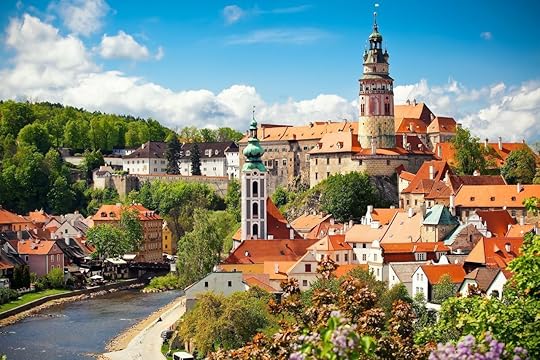
Photo: Veronika Galkina/Shutterstock
Czechoslovakia was formed after World War I and the fall of the Austro-Hungarian Empire when the Czechs formed a union with their Slovak neighbors to the east. Czechoslovakia was under Communist rule until the Velvet Revolution in 1989 — a non-violent revolution that refers to the peaceful transition of power away from communist rule. It was followed in 1993 by the equally peaceful Velvet Divorce when the Czech Republic and Slovakia became separate, independent countries.
7. Eritrea (1993)

Photo: Matej Hudovernik/Shutterstock
Eritrea was an African member of Italy’s colonial empire until 1941. The area was in a precarious position within the borders of Ethiopia, and for 20 years the United Nations made great efforts to grant it autonomy. Ethiopia had other ideas for the region, however, and annexed Eritrea in 1961, sparking a bloody war lasting until 1991 when the Eritrean rebels finally claimed victory. Two years later, Eritrea voted for its independence and officially became an autonomous country in 1993. Violence between Ethiopia and Eritrea continued until 2018 when a peace agreement was reached.
6. Palau (1994)

Photo: BlueOrange Studio/Shutterstock
Palau as an independent nation might be a relatively new development, but the history of its people goes back thousands of years. The archipelago of 340 coral islands between the Philippines and New Guinea has been inhabited since 2,500 BC and occupied at various times by Japan, Spain, Germany, and others. In 1947, Palau became part of the UN Trust Territory of the Pacific Islands, administered by the US. This arrangement came to an end in 1986, but it wasn’t until 1994 that Palau finally became a sovereign state.
5. Timor-Leste (2002)
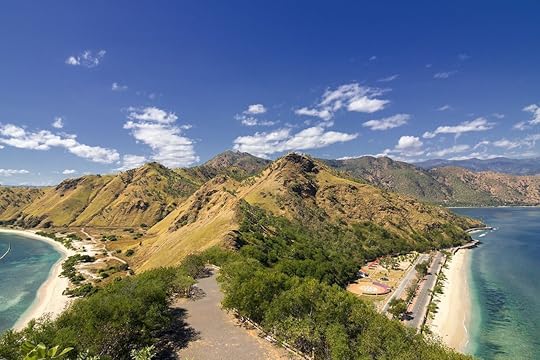
Photo: gaborbasch/Shutterstock
Comprising the eastern half of the island of Timor, just north of Australia, Timor-Leste — then known as East Timor — was under Portuguese control from the 16th century until 1975 when it finally declared its independence. Soon afterward, however, Indonesia claimed the territory and quelled the independence movements, with over 200,000 dying from the violence and famine. In 1999, Indonesia allowed East Timor to vote for its independence, and 78 percent of voters chose sovereignty. East Timor became its own nation in 2002 and is now officially known as Timor-Leste.
4 and 3. Montenegro and Serbia (2006)

Photo: S-F/Shutterstock
The history of the Balkan countries is a long and complicated one, and many argue that questions surrounding countryhood and identity still aren’t resolved. The borders of this region were redefined following the dissolution of Yugoslavia in 1992 and continue shifting even to the present day. After Yugoslavia’s fall, the now-separate countries of Montenegro and Serbia were known as the nation of Serbia and Montenegro, and then the State Union of Serbia and Montenegro. In 2006 Montenegro voted for independence — the result of EU diplomacy aimed at stabilizing the region and putting an end to the constantly changing borders. Two days after Montenegro gained independence, Serbia became its own sovereign state.
2. Kosovo (2008)
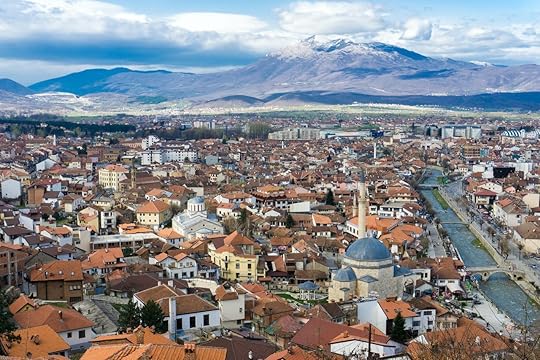
Photo: Scott Biales DitchTheMap/Shutterstock
As an independent nation, Kosovo goes way back to the Roman Empire, but its modern-day identity is almost inextricably linked with Serbia. Kosovo was acquired by Serbia in 1912 after the First Balkan War and revoked its autonomous status in 1990 to impose a Serbian administration on a mostly Albanian population. This move led Kosovar Albanians to try to achieve independence in 1991, prompting Serbia to commit ethnic cleansing against Kosovar Albanians in the late 1990s. Kosovo officially became a country in 2008, though Serbia and nearly half of the United Nations refuse to recognize its sovereignty.
1. South Sudan (2011)
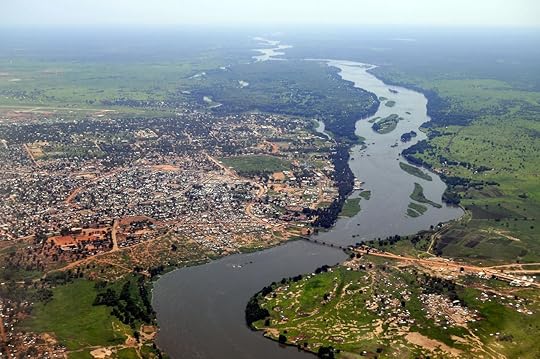
Photo: Frontpage/Shutterstock
The world’s newest country, South Sudan gained its independence twice. The first time was in 1956 when it gained autonomy from England and Egypt, which had been co-ruling it. That first taste of independence was short-lived, however, when the new country’s Muslim north clashed with Christians in the south. The Southern Sudan Autonomous Region was formed in 1972, but a second civil war broke out in the mid-1980s, resulting in more bloodshed and questions about the state’s autonomy. In 2005 a peace agreement was finally struck, stipulating that after six years of autonomy, citizens would vote on an independence referendum. In 2011, 98 percent of South Sudanese voted to become an independent nation. 

More like this: 6 places where you can be in two countries at once
The post The world’s 9 newest countries and their paths to becoming independent nations appeared first on Matador Network.

What is a microcation
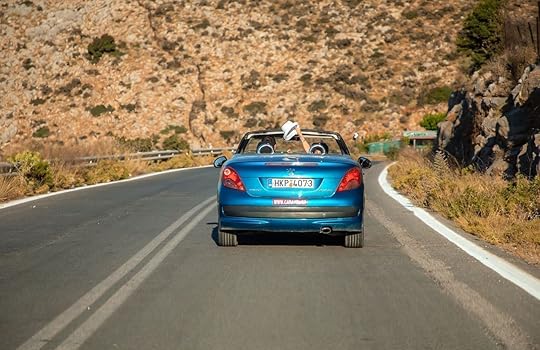
This is the Travel Take, where Matador’s writers and editors make the case for their favorite travel hacks, tips, and personal tics.
We’re living in a golden age of travel. There were 1.4 billion international tourists in 2018, according to the World Tourism Organization, and, thanks to technology, it’s never been cheaper to get from one side of the world to the other. Yet in this rush to see sights far and wide, it’s easy to lose sight of the wonders close to home. International travel has by no means lost its appeal, but there’s a strong case for this decade to be the decade of microcations.
A microcation is a vacation that’s fewer than five nights. Because of the time restriction, microcations generally focus on places close to home that you can get to by car or train. It’s the decision to make the short drive from New York City to the Hudson Valley for a long weekend (and then take another long weekend in Washington DC the following month) rather than a two-week stay in Italy, for example. Microcations allow everyone in a time-strapped existence to see more places throughout the year. They also often come with a lower cost — both monetarily and to the planet.
Microcations are far from a foreign concept. A study by the travel insurance company Allianz Global Assistance found that 57 percent of Americans took at least one microcation in 2018 (whether they knew the term or not), lead by 72 percent of millennials. Twenty-nine percent of Millennials claimed they’d taken at least three. Despite how much easier it is to travel abroad than it was even 10 years ago, microcations are very much a style of travel perfect for the current era.
The most existential reason why has to do with climate change. Flights contribute carbon emissions many multiples more than any other type of travel. Research dug up by the New York Times found that each seat on a flight from New York to Los Angeles equates to a month of human-generated emissions. Put another way, a 2,500-mile flight releases enough greenhouse gases to melt 32 square feet of Arctic summer sea ice. Compare that to taking a car, bus, or train to somewhere closer to home. There’s a reason people in Sweden flight shame.
Then there’s the issue of time. Americans, in general, work too much and don’t use the vacation time available to them. In 2018, some 768 million vacation days were left unused. That’s not healthy (literally, considering that people who work through vacation time are sicker and have higher levels of anxiety). While you should take all of your time off, it’s much easier to schedule a trip around a couple of days on either side of a weekend than it is to cross multiple consecutive weeks off your work calendar.
Finally, there’s overtourism to consider. Cities like Amsterdam and Venice are imposing steep tourism taxes, while sites like Machu Picchu are limiting the number of visitors allowed. Cities that cater to tourists are steadily losing bits of local culture as international hoteliers and business owners bring the same minimalist aesthetic to all corners of Earth. You don’t have to look far in a new city to find a third-wave coffee shop that looks just like the one back home. Plus, the economies of smaller cities closer to home may be in more need of tourism dollars than somewhere like Barcelona.
Spontaneity comes easy when you’re closer to home and aren’t required to plan a trip months in advance. The same technology that makes long-distance travel easier — ride-shares, niche travel media, and affordable places to stay and experiences led by locals on Airbnb, to name a few — also make last-minute microcations easier to plan with minimal stress.
I’m not suggesting that people give up international travel. Learning about other cultures through the first-hand experience is irreplaceable and can’t be done without making the journey. Still, it’s impossible to ignore the impact of excessive long-distance leisure travel. The answer to traveling with fewer downsides, somewhat paradoxically, isn’t to travel less but to travel more. Just do it in shorter, localized increments. Microcations give you the opportunity to learn about the places right outside your city’s limits — places that are easy to put off seeing when the other side of the ocean is the same travel time by plane.
If you have the means, take that big trip and soak up as much local culture, eat as much local food, and take in as many local experiences as you can. Just do yourself a favor and also fit some microcations into your busy life. The softer impact on your wallet, and the climate, can make each one the trip of a lifetime. 

More like this: Mapped: The optimal road trip to see all the US national parks
The post It’s time to take more microcations appeared first on Matador Network.

Traditional Minnesotan foods

Minnesota doesn’t disappoint in the natural wonders department. After all, it’s the birthplace of the mighty Mississippi, North America’s longest river, and is famously the Land of 10,000 Lakes (actually 15,000, but who’s counting). But the North Star State impresses in another category as well: food. By channeling its immigrant roots and true northern spirit, Minnesotans have fully embraced their destiny as a culinary capital.
1. Jucy/Juicy Lucy
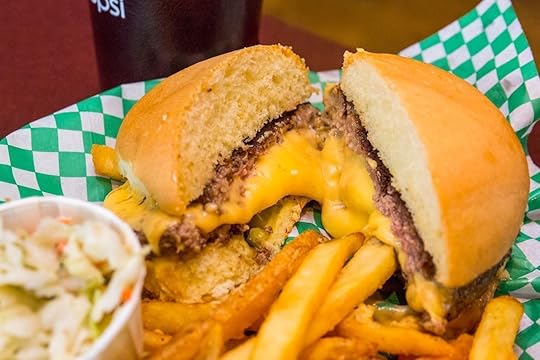
Photo: 5-8 Club/Facebook
Minnesota’s Juicy Lucy sandwich is the king of all burgers. It’s essentially a cheeseburger, but, instead of putting cheese on top, the cheese is sandwiched between meat patties until it’s totally encased. If you poll Twin Cities residents, you’ll likely hear two different tales of how it was invented. Some call Matt’s Bar in Minneapolis the Juicy Lucy pioneer while others give the title to the 5-8 Club. The beef at Matt’s comes with a crust from cooking on the decades-old griddle. It’s also spelled without the “i” at Matt’s, and legend has it that the original sign from the 1950s was misspelled and the bar just ran with it. The 5-8 Club has a more upscale ambiance and gives customers the option for types of cheese other than the standard American.
2. Spam

Photo: Brent Hofacker/Shutterstock
Often celebrated in Hawaiian cuisine, Spam (short for “spiced ham”) was invented by Hormel Foods in Austin, Minnesota. Famous for feeding the troops in World War II, this pre-cooked pork product is distinctly Minnesotan. In the small town of Austin alone, 17 restaurants serve Spam, and Spam musubi (a slice of Spam on top of sushi rice and held together with nori seaweed) is a staple on Minneapolis-area Japanese restaurant menus. Additionally, visitors and locals alike can celebrate all things Spam at the admission-free Spam Museum in Spamtown USA, Austin’s fitting nickname and the corporate home for Hormel.
3. Wild rice

Photo: Plateresca/Shutterstock
Wild rice (which is actually a type of aquatic grass that looks like rice) is the official state grain of Minnesota and one of the only grains native to North America. Today, there are two types of wild rice you’re likely to see in the state. There’s lake-grown wild rice, which has long been a staple for indigenous Ojibway Native Americans and is still harvested by hand in the fall. Then there’s paddy-grown “wild rice,” which comes from a University of Minnesota domestication program and isn’t technically wild. Paddy rice is also bred to allow mechanical harvesting. True wild rice is typically a light brown (the exact shade depends on the lake it was harvested from) while paddy-grown is typically dark brown to black. Wild rice is commonly enjoyed in hotdish, in soups, and as a side dish.
4. Hotdish

Photo: Brent Hofacker/Shutterstock
Don’t you dare call hotdish a casserole. Hotdish is not technically a single recipe but is instead a longstanding Minnesotan tradition of homey, one-pan dining. Nearly every household in the state has its own iteration, though most involve canned cream of mushroom soup and canned vegetables. The savory element can be chicken, mushroom, turkey, or another meat. One of the most known is the tater tot hotdish, which has layers of meat, green beans, corn, onions, and cream of mushroom soup that’s all topped with a layer of tater tots (the exact layers vary, but the tater tot topping is required). Expect to find a hotdish at nearly every potluck and casual gathering.
5. Lefse and lutefisk
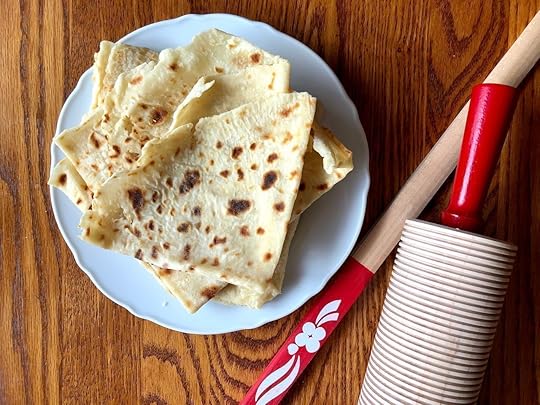
Photo: JLMcAnally/Shutterstock
Many of Minnesota’s early European immigrants hailed from Scandinavia, which has a similarly cold climate. Today, Nordic traditions remain a huge part of culinary life in Minnesota. Take, for example, lefse, a Norwegian potato flatbread and Minnesota staple. It’s typically made with a lefse stick, which is a specialized tool that looks a little like a bigger version of the tongue depressors that doctors use before having you say “ah.” These lefse sticks help turn and flip the flatbread while it cooks. Another Scandinavian food that’s common in Minnesota is lutefisk, which is fish preserved in lye. It is somehow both dry and gelatinous and, when prepared well, has a mild taste. Generally, this fish is served with a peppery white sauce.
6. Dessert bars

Photo: Lindsay Jubeck/Shutterstock
No, this has nothing to do with the drinking establishments. Bars are essentially cookies in a pan, and they’re a dessert staple at Minnesotan bake sales, church picnics, and potluck dinners. Like the hotdish, a dessert bar isn’t limited to a specific style or set of ingredients. It can be made with peanut butter or lemon, Rice Krispie Treats or chocolate. What is required is that dessert bars are cooked in a large, shallow baking dish and cut into single serving rectangles.
7. Walleye

Photo: Dan Thornberg/Shutterstock
No list of Minnesotan foods is complete without honoring the walleye, which is the state fish. Growing up in Minnesota almost surely means that you’ve been on a walleye fishing trip. The freshwater fish are known to be slightly elusive and can be picky about the type of bait. The fish is delicious cooked in a variety of ways, including as a fritter, in a sandwich, or fileted for a simple yet flavorful dish. Vendors at the state fair (AKA the Great Minnesota Get-Together) serve walleye on a stick. Whichever way it’s prepared, walleye will not disappoint. 

More like this: Why people from the Upper Peninsula of Michigan are obsessed with pasties
The post 7 classic Minnesotan foods, from Jucy Lucy to hotdish appeared first on Matador Network.

Matador Network's Blog
- Matador Network's profile
- 6 followers



